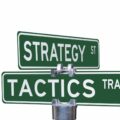2+2=Fish 3+3=Eight 7+7=Triangle 4+4=Arrow 8+8= Butterfly
I’ve always been intrigued by the unexpected, the unusual, and yes, even the downright quirky. And that’s exactly what these cryptic equations represent: 2+2=fish, 3+3=eight, 7+7=triangle, 4+4=arrow and 8+8=butterfly. At first glance, they may seem nonsensical or like a child’s playful scribbling; yet there’s something more than meets the eye here.
As I delved into this intriguing phenomenon of combining mathematics with visual puzzles, I discovered an underpinning rationale behind these wacky equations. They’re not random at all – in fact, they’re quite cleverly designed to challenge our preconceived notions about numbers and symbols.
So why does 2+2 equal a fish instead of four? Or for that matter, why does 7+7 become a triangle rather than fourteen? The answers lie not in traditional mathematics but in creative thinking and perception. This is where we venture into the fascinating world of visual math puzzles – a realm where numbers transform into images right before your eyes! It’s an adventure worth embarking on; so buckle up as we explore this captivating conundrum together.

Decoding the ‘2+2=Fish’ Equation
Have you ever come across this brain teaser: “2+2=fish”? At first glance, it’s a head-scratcher. Let’s dive in and figure out what this really means.
First off, don’t be fooled into thinking that we’ve abandoned all mathematical principles here. This isn’t about redefining the laws of arithmetic but rather exploring creative problem-solving and lateral thinking. The key to understanding these types of puzzles lies in challenging our conventional approach to math problems and embracing an entirely different perspective.
In the case of “2+2=fish”, imagine each number as a shape instead of a numerical value. If you rotate the number 2 by 90 degrees clockwise, it starts resembling a fish (at least, if your imagination is flexible enough!). Combine two of these rotated ‘2’s, and there you have it – a pictorial representation of a fish! Consequently, “2+2” doesn’t equal four in this context; instead, it creates an amusing image of a fish!
This type of problem-solving encourages us to think outside the box. It goes beyond numbers and equations—it’s about visual understanding and conceptual reasoning. As humans, we’re naturally inclined towards finding patterns and connections—whether they’re logical or whimsical!
Next time you stumble upon similar riddles like “3+3=eight” or “7+7=triangle”, remember—they aren’t meant to test your algebraic skills but your creativity! So go ahead—unleash those imaginative powers and enjoy solving these fun puzzles!
Jessica has a flair for writing engaging blogs and articles. She enjoys reading and learning new things which enables her to write different topics and fields with ease. She also strives to break down complex concepts and make them easy for anybody to comprehend.





